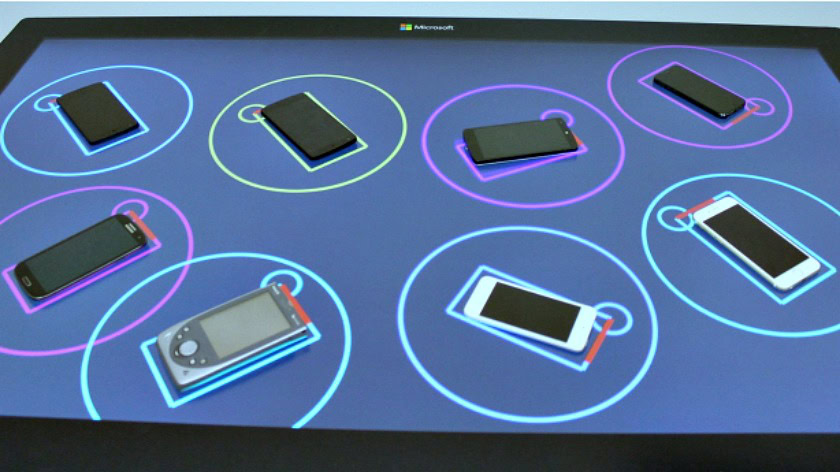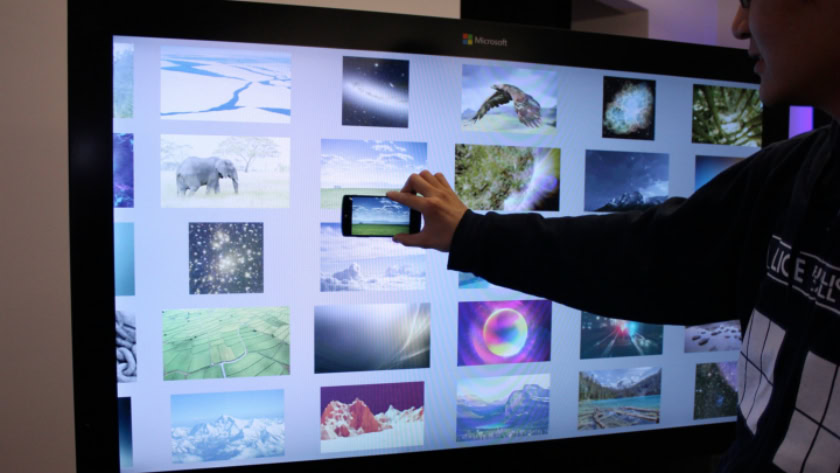Affiliate links on Android Authority may earn us a commission. Learn more.
Is this the future of smartphone pairing?

Imagine a future where Bluetooth pairing is a thing of the past, where all you have to do is touch your phone to a device to have it paired – with no prompts, no menus and no prior knowledge. Unlike NFC, this new technology would offer bi-directional communication for multiple devices, establishing an ad-hoc and anonymous temporary connection. Sound too good to be true?
A new pairing technology has just been presented at the ACM International Conference on Interactive Surfaces and Spaces that can do all this and more. Called CapCam, it is a novel solution to a familiar problem: quick, easy and reliable pairing of devices.
To give you an idea of what it can do, it takes just one second, requires zero configuration and is four times faster than Bluetooth.
CapCam is a novel solution to a familiar problem: quick, easy and reliable pairing of devices.
But what’s perhaps most exciting is that this new technology doesn’t require heavy investment in R&D, expensive new fabrication processes or even revolutionary new hardware. CapCam works, right now, using your smartphone’s existing camera and the kind of capacitive touch screen found everywhere.

Imagine walking past a photo wall, placing your phone against it and instantly having that image transferred to your phone for use as a wallpaper. Or pressing your phone to a public touch screen to log into your account. Or being able to drag and drop content from a touch screen onto your smartphone that’s sitting on top of it. Sounds pretty cool.
How does it work?
The way CapCam works is deceptively simple: it uses the multi-touch capacitive matrix present in the touch screen to recognize an object placed on top of it, in this case a smartphone. The screen transmits basic pairing data by modulating the color of pixels under the device’s camera, which the phone then decodes. This information is used to establish a conventional connection (like Wi-Fi), over which content can be sent or received in a highly targeted manner.
The screen transmits basic pairing data by modulating the color of pixels under the device's camera, which the phone then decodes.
CapCam can also track the location of the device on the touch screen, allowing for custom interactions with specific areas of the touch screen to be made locally on your smartphone. In the video below, an anatomical figure provides one example, a game of virtual air hockey another. The phone’s speakers and haptic feedback can also be tapped independently to provide another layer of complexity.
CapCam can reportedly pair and transfer data at four times the speed of other camera-based transmission techniques and there’s an entire research paper available if you want to read more about the security and reliability of the system. With a good display, CapCam’s developers report it can transmit 150 bits/second with a 1 percent packet loss rate.
It’s clear that with the rise of IoT and connected devices, a huge, non-tech savvy audience is just waiting to be tapped. It’s equally clear that we’re in dire need of simpler, smarter and more capable pairing solutions than what we currently have.
While it’s too early to say if CapCam is the elegant solution to a very ungainly problem, it certainly provides an enticing alternative vision of just how simple device pairing could be in future.
What do you think of CapCam? What other applications can you imagine for it?